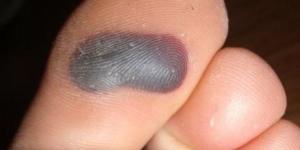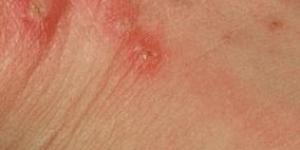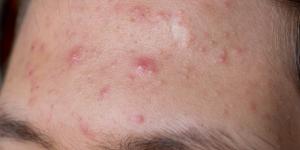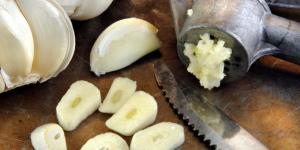What are the Stages of a Cold Sore?


Herpes is a very common skin condition caused by the herpes simplex virus. While there is a link between herpes and sexual activity, this is commonly from type 2 herpes simplex (HSV-2) which affects the genitals. Cold sores, the nasty and often painful blisters which can appear around your lips and mouth, are from herpes type 1 (HSV-1). This is what results in something we call oral herpes. The different types of herpes are classified by the part of the body on which they appear. In this oneHOWTO article, we explain what are the stages of a cold sore. This way you can identify if this is your problem, know what you can do to treat the cold sore and find out how long it will stay.
Which type of herpes?
As this article is talking about cold sores, we are only dealing with oral herpes. You may have blisters on other parts of your body. While these may be due to herpes, they are not cold sores. One other type of herpes which affects the skin is herpes zoster, commonly known as shingles.
Identifying these other types of herpes, whether they be from a sexually transmitted disease or not, is different from cold sores.
Cold sores
Cold sores or fever blisters can also affect other parts of the face in addition to the mouth. They are very common and are highly contagious. They cause blisters or sores on the lips, chin, cheeks, nostrils, gums, roof of the mouth and other areas as well.
You may hear some scare stories about herpes and cold sores. It it true that once infected, you will always have it. There is no cure. Outbreaks of the virus itself can be kept at bay by antiviral medication, but even then you may still experience symptoms.
However, the good news is that it is relatively normal. If taken worldwide, rates of either types of herpes simplex mentioned before are between 60% and 95%. Outbreaks usually occur in childhood, but they will decrease with age. Only a third of people will experience another outbreak after their first. Even those with regular outbreaks shouldn't experience them more than two or three times a year.
How are cold sores spread?
HSV-1 is spread by direct contact. The virus is normally transmitted when an open wound or tiny abrasion comes into contact with a cold sore. The virus can enter the body and remain latent for a long time, only causing an outbreak at moments of weakened immune system. This is why they are common occurrences in people affected by HIV/AIDS. Some people harbor the virus without ever getting any cold sores, but usually sores occur around the area through which the virus entered the body.
Stages of cold sores
Cold sores will usually last somewhere between 10 and 14 days, but it depends on their severity. While a tingle in the skin will be the start of the appearance of a cold sore, it is not the actual start. To know more about the stages of a cold sore, we have made this chart for you:
- Latent period: this is the period between infection with the virus, but before any physical symptoms occur. It can be weeks or months without seeing anything, but a trigger such as stress or fever might help it on its way.
- Tingling or itching: known as the "prodormal" stage, this is when the skin starts to tingle. You may not see anything for up to a few days, but a cold sore is imminent.
- Inflammation: when the area with the tingle starts to become red, agitated and inflamed. This is due to the cells fighting the viral infection. This will last 1 - 2 days.
- Blister stage: this is when the cells form a blister cluster on the lip. It usually happens around the 2nd or 3rd day of infection.
- Open sore: this is when the blister breaks the skin and a full open cold sore appears. This can be very irritating and even painful, especially in larger cases.
- Healing: this is when the open sore starts to crust over, usually after 5 - 8 days. It is golden brown or yellow in color and can be very sensitive. It is, however, the beginning of the healing process and the irritation should start to lessen. Once it starts to heal, it should tingle much less.
- Post-scab: this is when the scab has gone, but the cells are still repairing themselves. It signals the end of the cold sore.
If you have what looks like a cold sore in the corner of your mouth, it might actually be something called perlèche (also known as angular cheilitis).

Treatment of cold sores
The blisters (vesicles) are the most obvious sign of a cold sore and can be a little unseemly and frustrating. Fortunately, this stage won't last very long, but if you want to try to keep it at bay, topical cream might be the best option for you. If you go to your doctor, they will likely prescribe something like docosanol. It is a fatty alcohol which should help speed up the recovery.
Other topical creams used will likely have zinc oxide or zinc sulphate in them. It is believed that the use of "zinc oxide to decrease the probability of recurrent outbreaks may help"[1], but it is hard to keep applying something to an area where you are not sure an outbreak will occur.
A better way to prevent a cold sore outbreak include maintaining your overall health. One of the beliefs that it is called a cold sore is because it often occurs during another illness, the common cold being one of them. This illness can be anything, but it is often related to stress[2]. Keeping your stress level down can help to avoid cold sores.
As cold sores appear around the mouth and lips, you should also stay away from sharing items which can pass on the virus. This can mean touching your lips to the same glass, but also kissing or eating from the same utensils.
Use sunscreen when out in the sun as exposure can increase the chance of an outbreak. Keep hydrated with lots of water and watch out for the amount you drink or smoke.
This article is merely informative, oneHOWTO does not have the authority to prescribe any medical treatments or create a diagnosis. We invite you to visit your doctor if you have any type of condition or pain.
If you want to read similar articles to What are the Stages of a Cold Sore?, we recommend you visit our Diseases & secondary effects category.





